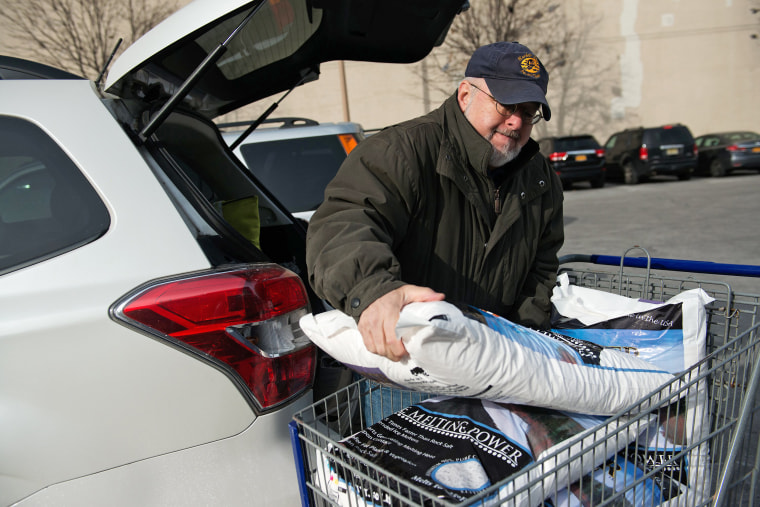If you’re in the path of this weekend’s potentially historic blizzard, it’s not too early to start thinking about the aftermath. For millions of East Coast and Mid-Atlantic residents, that will mean deicing driveways, sidewalks and walkways.

There’s no shortage of ice melting products available, but the choices can be difficult to navigate. Here are some good options, depending on your needs.
Mid-Atlantic Blizzard Could Make 'Legitimate' History
The cheapest option
Rock salt, also known as sodium chloride, is the standard option for deicing, and it’s fairly inexpensive. You can typically buy a 50-pound bag for under $10, while most commercial deicing products cost about $20 for the same amount.
There are a few drawbacks. For one, rock salt isn’t as effective as many other options for deicing and can start to lose its effectiveness at temperatures below 25 degrees. Rock salt can also damage many surfaces, including concrete and brick, and is harmful to grass and plants. And if pets ingest a large amount, it can be lethal.
The most effective option
Calcium chloride works quickly, melting ice in 15 to 30 minutes. It also works well in extreme cold, with an effective range down to about 25 degrees below zero.
Calcium chloride can damage plants and grass, so it’s important to use as directed and not apply too much. It can also burn or irritate skin, so wear protective gloves when handling it, and keep pets away.
Blizzard Blog: Live Updates and Latest Forecasts
The most environmentally friendly option
Calcium magnesium acetate is generally considered to be the most eco-friendly option for deicing. A study from Worcester Polytechnic Institute concluded that “calcium magnesium acetate is an environmentally friendly alternative” because of its low toxicity and biodegradability. It’s also safe for concrete and non-corrosive.
However, like rock salt, it may not be effective at temperatures below 20 degrees, so it doesn’t work well for extreme cold.
The best option if you have pets
Urea is a safer option if you have pets, but like any ice-melting product, it can still be hazardous. According to the ASPCA, while urea is generally not toxic, when dogs ingest it, it can lead to “hypersalivation, gastroenteritis, and abdominal pain.”
It can also damage grass and plants when overapplied, and it can be corrosive to metals. It works best at around 25 degrees, and it starts to lose its efficacy around 10 degrees.
The best option for avoiding surface damage
Potassium chloride is safe for almost all surfaces and won’t cause damage to concrete or asphalt. It has a high temperature threshold, however, and may not be effective below 25 degrees.
Whichever option you choose, it’s important to follow the directions on the product and only use the recommended amount. You’ll need anywhere between 1 and 5 pounds of product per 100 square feet, so unless you have a lot of territory to clear a standard 50-pound bag should be big enough to get you through the storm.

